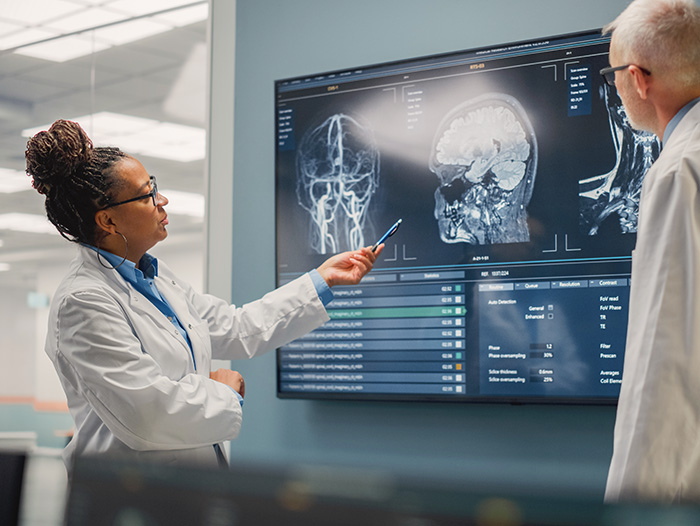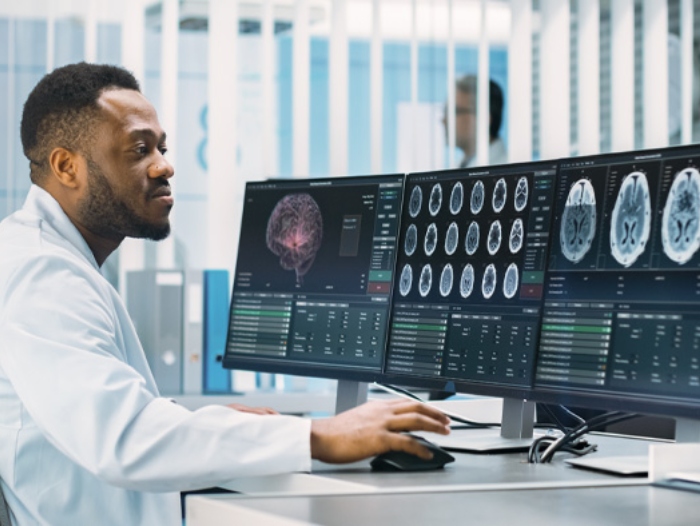Writing for the Harvard Business Review, experts from Zhejiang University's School of Management harness their research to outline the pros and cons of using generative AI in the workplace.
How generative AI can affect employees
In four studies that involved more than 3,500 participants, the researchers explored outcomes of human collaboration with generative AI on common work tasks.
In the studies, participants completed real-world professional tasks, like writing Facebook posts, brainstorming ideas, and drafting emails, both with and without generative AI. They then assessed both task performance and participants' psychological experiences, including their sense of control, intrinsic motivation, and levels of boredom.
The researchers found that generative AI enhanced both the quality and efficiency of the participants' tasks. For example, performance reviews written with generative AI were significantly longer, more analytical, and conveyed a more helpful tone compared to reviews written without AI.
Similarly, emails drafted with generative AI typically contained warmer, more personable language that included more expressions of encouragement, empathy, and social connection compared to those written without AI.
However, the researchers also found that despite the performance benefits, participants who collaborated with generative AI on one task and then moved on to a different task unaided by AI reported a decline in intrinsic motivation and an increase in boredom. Across the four studies, the researchers found that intrinsic motivation dropped by an average of 11% and boredom increased by an average of 20% in these instances. By comparison, those who worked without AI assistance maintained a fairly consistent psychological state.
These findings suggest that while utilizing generative AI tools can feel productive and empowering at first, it can also leave employees feeling less engaged when they shift to tasks unaided by AI.
Why the phenomenon occurs
According to the researchers, collaborating with generative AI can bypass the most cognitively demanding parts of a task, which are often what makes work stimulating and personally fulfilling.
For example, writing a performance review requires critical thinking and tailored feedback, but when generative AI writes most of this content, the process becomes less engaging, and people can feel disconnected from the task. As a result, when individuals return to work unaided by AI, they become bored and less motivated.
"After all, the future of work isn't just about what AI can do — it's about what humans and AI can achieve together."
In their research, the authors found that generative AI collaboration initially reduced workers' sense of control or their feeling of being the primary agent of their work. This sense of control is a key component of intrinsic motivation, and when people feel they're not fully in charge of their output, it can undermine their connection to the task.
However, the authors also found that transitioning back to solo work restores that sense of control, though it comes at the cost of enjoyment. In essence, workers regain their autonomy but feel less inspired and challenged.
While generative AI can help organizations achieve short-term performance goals, overusing it could have long-term consequences for workers' psychological well-being, the authors write. If employees are consistently relying on AI for creative or cognitively challenging tasks, they risk losing the aspects of work that drive engagement, growth, and satisfaction.
What companies can do in response
According to the authors, the solution to the problem discovered in their research isn't abandoning generative AI, but instead redesigning tasks and workflows to preserve employees' intrinsic motivation while still leveraging AI's strengths.
The authors recommend five strategies:
1. Blend the contributions of humans and AI.
Instead of allowing generative AI to complete entire tasks, integrate AI outputs as a starting point while still encouraging human creativity.
For example, generative AI could draft an outline for a performance review, but the manager should elaborate on the initial content with their personalized insights. Or AI could generate initial ideas for a project while team members expand, refine, and build on them.
2. Design solo tasks that are engaging.
To help counterbalance the psychological costs of AI collaboration, follow up any AI-assisted tasks with work that provide autonomy and a sense of a creative challenge, the authors write.
For example, after drafting emails supported by AI, the authors recommend assigning a task that allows workers to be in control of designing a new project. These tasks will allow employees to exercise their skills, creativity, and decision-making without needing AI.
3. Be transparent with AI collaboration.
The authors write that their study found workers can feel disengaged when they believe AI has taken control. Clearly communicating how AI is assisting and not replacing their contributions can help workers maintain a sense of ownership and fulfillment in their tasks.
4. Rotate between different tasks.
Organizations can sustain both productivity and engagement by structuring workflows to alternate between independent tasks and those assisted with AI, the authors Liu and Wu write. Instead of clustering similar tasks together, managers can sequence the day to start with the cognitively demanding solo work and shift to AI-supported tasks later.
5. Train employees to use AI mindfully.
To avoid being over-dependent on AI, organizations can provide training to build employees' ability to utilize generative AI thoughtfully and effectively, the authors write.
This could include running workshops on prompt writing, engaging in critical evaluations of AI-generated content, or introducing scenario-based exercises that highlight when human judgment should take over. Workers can learn how AI can complement their work and what part their own skills must play, which can help foster autonomy, creativity, and long-term skill development.
"Human-gen AI collaboration has immense potential to boost productivity and performance, but organizations must be mindful of its psychological consequences," the authors write. "By thoughtfully designing workflows that integrate gen AI, businesses can unlock its benefits without compromising workers' motivation and engagement. After all, the future of work isn't just about what AI can do — it's about what humans and AI can achieve together."
ADVISORY BOARD'S AI-RELATED resources
For more insights in AI and healthcare, check out these Advisory Board resources:
This expert insight outlines different strategies for AI adoption, which can help you decide the best approach for your organization. Similarly, this expert insight explains how health system executives currently approach AI in healthcare.
To use AI effectively, this infographic explains how to overcome AI challenges to unlock the technology's full potential while this field guide outlines how to take a problem-first approach to AI.
We also have a featured page on AI, which includes research on how to mitigate challenges with the technology, how leaders should approach investments in AI tools, and more.
(Liu et al., Harvard Business Review, 5/13)
Don't miss out on the latest Advisory Board insights
Create your free account to access 1 resource, including the latest research and webinars.
Want access without creating an account?
You have 1 free members-only resource remaining this month.
1 free members-only resources remaining
1 free members-only resources remaining
You've reached your limit of free insights
Become a member to access all of Advisory Board's resources, events, and experts
Never miss out on the latest innovative health care content tailored to you.
Benefits include:
You've reached your limit of free insights
Become a member to access all of Advisory Board's resources, events, and experts
Never miss out on the latest innovative health care content tailored to you.
Benefits include:
This content is available through your Curated Research partnership with Advisory Board. Click on ‘view this resource’ to read the full piece
Email ask@advisory.com to learn more
Click on ‘Become a Member’ to learn about the benefits of a Full-Access partnership with Advisory Board
Never miss out on the latest innovative health care content tailored to you.
Benefits Include:
This is for members only. Learn more.
Click on ‘Become a Member’ to learn about the benefits of a Full-Access partnership with Advisory Board
Never miss out on the latest innovative health care content tailored to you.



